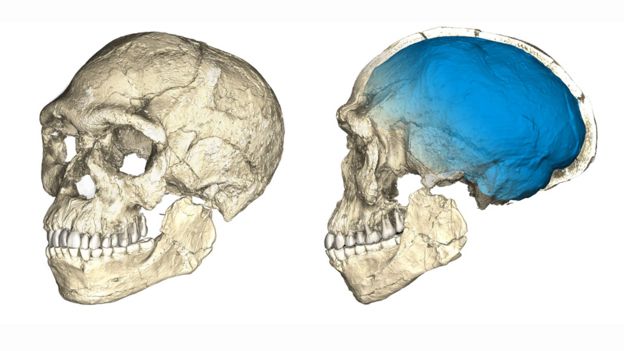
The idea that modern people evolved in a single "cradle of humanity" in East Africa some 200,000 years ago is no longer tenable, new research suggests.
Fossils of five early humans have been found in North Africa that show Homo sapiens emerged at least 100,000 years earlier than previously recognised.
It suggests that our species evolved all across the continent, the scientists involved say.
Their work is published in the journal Nature.
Prof Jean-Jacques Hublin, of the Max Planck Institute for Evolutionary Anthropology in Leipzig, Germany, told me that the discovery would "rewrite the text books" about our emergence as a species.
"It is not the story of it happening in a rapid way in a 'Garden of Eden' somewhere in Africa. Our view is that it was a more gradual development and it involved the whole continent. So if there was a Garden of Eden, it was all of Africa."
Prof Hublin was speaking at a news conference at the College de France in Paris, where he proudly showed journalists casts of the fossil remains his team has excavated at a site in Jebel Irhoud in Morocco. The specimens include skulls, teeth, and long bones.
Earlier finds from the same site in the 1960s had been dated to be 40,000 years old and ascribed to an African form of Neanderthal, a close evolutionary cousin of Homo sapiens.
But Prof Hublin was always troubled by that initial interpretation, and when he joined the MPI he began reassessing Jebel Irhoud. And more than 10 years later he is now presenting new evidence that tells a very different story.
The latest material has been dated by hi-tech methods to be between 300,000 and 350,000 years old. And the skull form is almost identical to modern humans.
The few significant differences are seen in a slightly more prominent brow line and smaller brain cavity.
Prof Hublin's excavation has further revealed that these ancient people had employed stone tools and had learned how to make and control fire. So, not only did they look like Homo sapiens, they acted like them as well.

0 comments:
Post a Comment